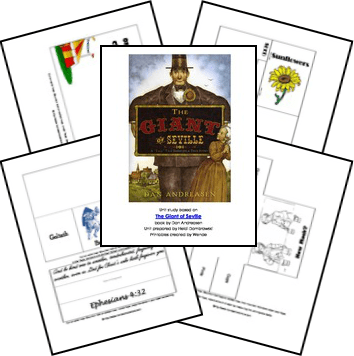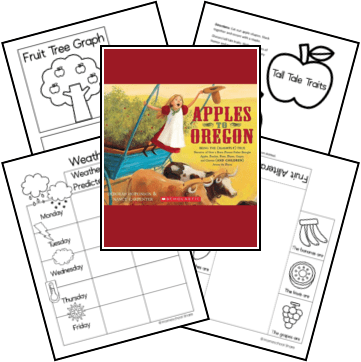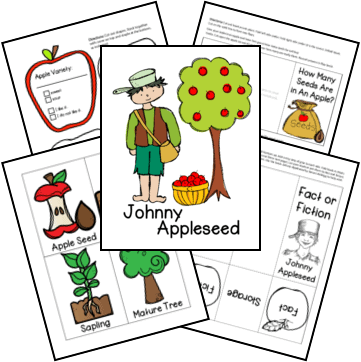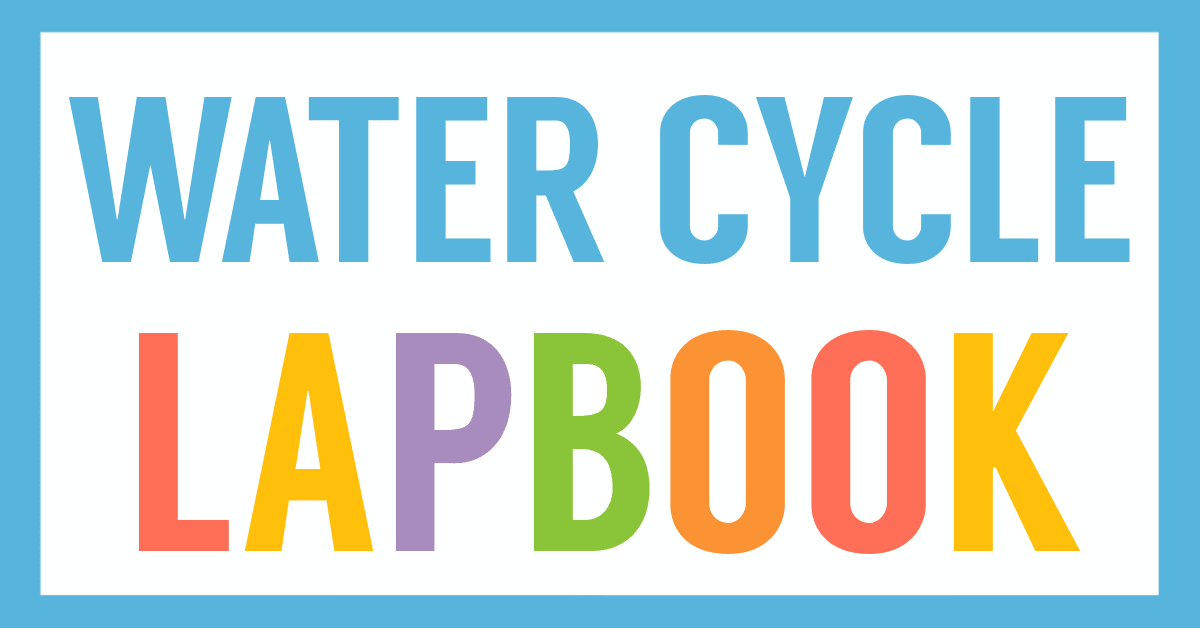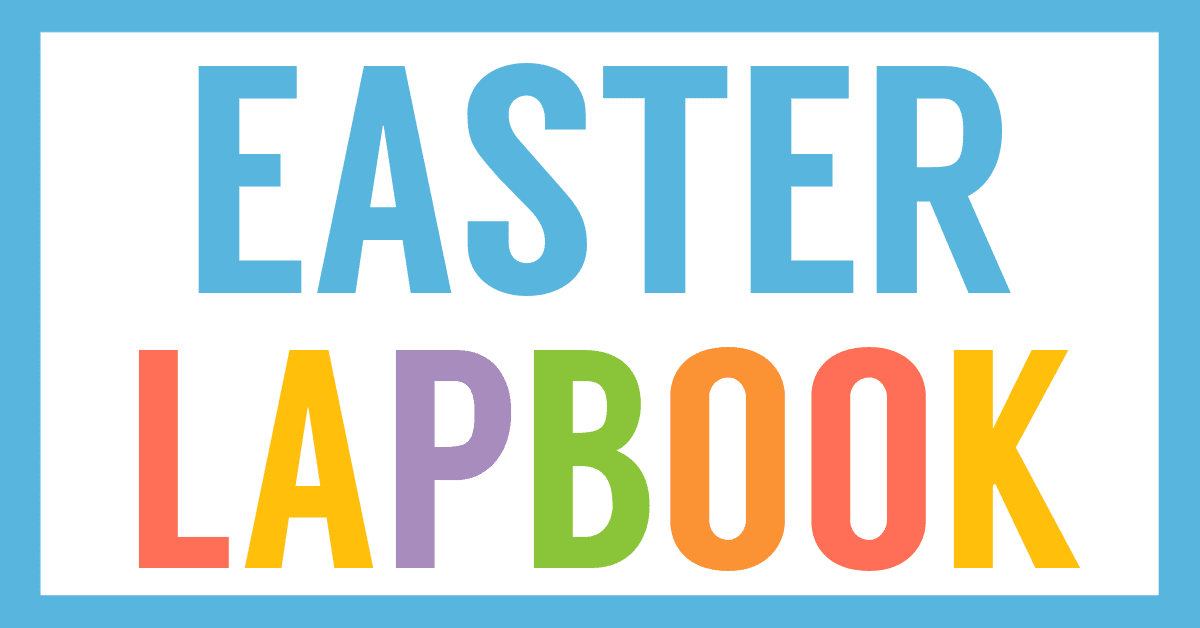Affiliate Disclaimer
We sometimes use affiliate links in our content. This won’t cost you anything, but it helps us to keep the site running. Thanks for your support.
Nothing exciting ever happens in the sleepy town of Seville, Ohiountil Captain Martin Van Buren Bates arrives. Standing seven feet and eleven and a half inches, Captain Bates is a giant who has toured around the world in the circus.
In search of a quiet home for himself and his wife, (who is also a giant!) Captain Bates decides to get off the train in Seville, although he fears he will be too big for the little town. But Seville is full of surprises, and the giant is about to learn that the only thing that matters is the size of ones heart.
Thanks to Heidi Dombrowski for writing the lessons for this The Giant of Seville unit study. Thanks to Wende for creating the lapbook.
The Giant of Seville Unit Study Lessons
This unit study includes lessons and printables based on the book The Giant of Seville by Dan Andreasen.
Here are some sample lessons from the The Giant of Seville Unit Study.
Language Arts: Tall Tale
The Giant of Seville is a story about a real man, Martin Van Buren Bates, whose life story is stretched and turned into a tall tale. What is a tall tale? A tall tale is fiction and is usually about a person that is extraordinary and ‘larger than life’. The last page of the book, under the author’s note, gives some information about Captain Martin Van Buren Bates’ life. In what way is the tall tale similar to his real life? In what way are they different?
Captain Van Buren’s size was exaggerated in the story and his size caused problems for the town of Seville. Solving each of the problems the Captain faced is funny and draws the reader in. What parts of the story tell you that the story is a tall tale?
Other tall tales that might be fun to read would be Paul Bunyan, Pecos Bill and Johnny Appleseed. Compare The Giant of Seville to one of these stories. What is similar? What is different?
Math: Measurement
How tall was Captain Bates? According to the author’s note, Martin Van Buren Bates was seven feet eleven and a half inches. Using a tape measure, measure the Captain’s height on a wall and compare the height to with the members of your family. If you have paper that you can cut that large, such as butcher paper, you could draw a man that measures the exact height of the Captain.
Science: Sunflowers
The story tells us that Captain Bates had a bright yellow sunflower in his lapel. Why do you think he would have a sunflower in his lapel instead of a carnation or rose? The Captain is tall, so what better flower to wear than a sunflower?
Sunflowers are native to the Americas and can grow to heights of 8’ to 12’. Sunflowers need full sun to grow. There are 23 varieties of sunflowers. If the weather is good, plant some sunflowers and watch them grow. Have your child draw a seed before you start and continue to draw the sunflower’s life cycle as it grows. At the end of the season, wrap the head of the sunflower in a bag and close with a rubber band. Let it dry in a cool, dry place. Once it is dried, shake the flower in the bag and you will have sunflower seeds that you can use to feed the birds or to plant the following year. If you feed the birds, try to keep track of which ones come to eat it.
You can grab a copy of the entire The Giant of Seville Unit Study and Lapbook in an easy-to-print file at the end of this post.
The Giant of Seville Lapbook Printables
In addition to the unit study lessons, this file includes these mini-books for your student to create a The Giant of Seville Lapbook:
- Vocabulary Flap Book
- Tall Tales Simple Fold Book
- How Tall? Measurement Layer Book
- Steam Train Simple Fold
- Ohio Symbols Tab Book
- My Favorite Part of the Circus Shutterfold Book
- Goliath & Captain Bates FLap Book
- Ephesians 4:32 Mini-book
- Sunflower Life Cycle Tab Book
- How Much? Measurement Mini-book
How to Get Started with Your The Giant of Seville Unit Study & Lapbook
Follow these simple instructions to get started with the The Giant of Seville Unit Study:
- Buy a copy of the book, The Giant of Seville, or borrow one from your local library.
- Print the The Giant of Seville unit study.
- Choose the lessons you want to use with your student (a highlighter works great for this).
- Choose and prepare the lapbook printables you want to use with your student.
- Enjoy a week of learning with this tall tall-tale.
Get Your Free The Giant of Seville Unit Study & Lapbook
Simply click on the image below to access your free The Giant of Seville Unit Study and Lapbook.
More Literature Based Unit Studies
Check out these other literature based unit studies.

